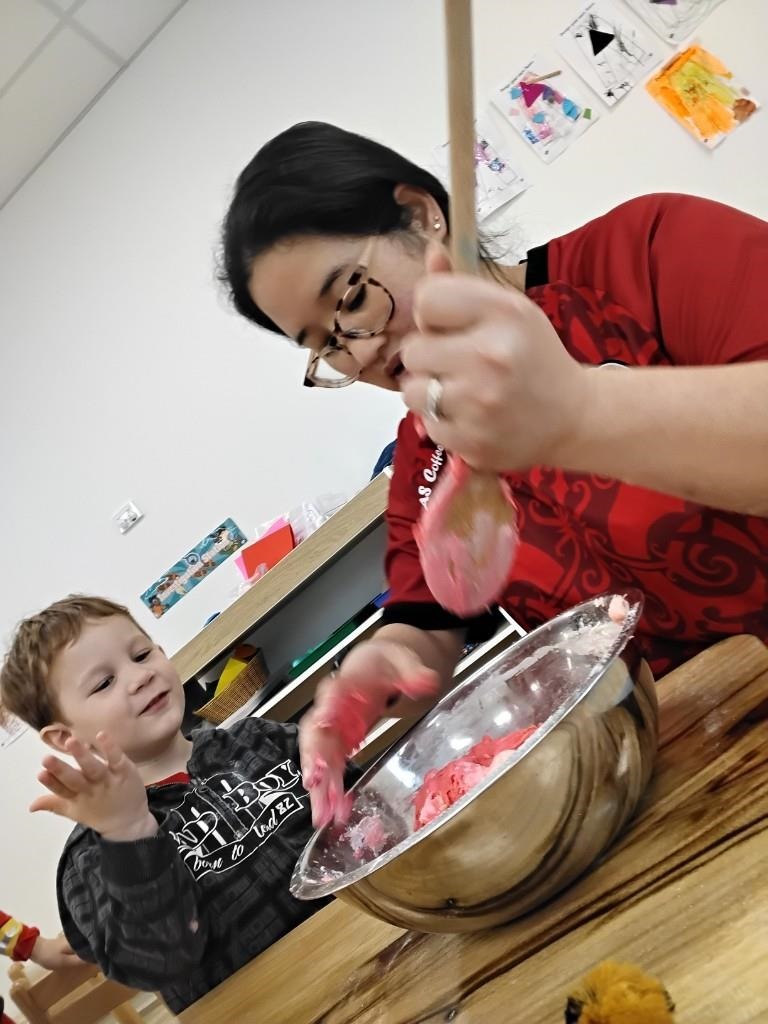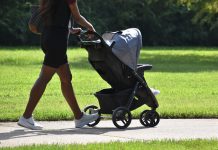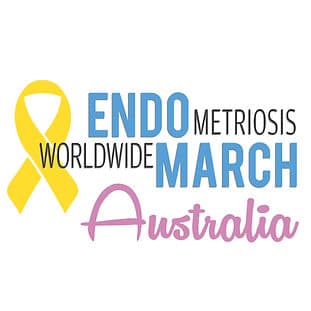
March is recognised worldwide as Endometriosis Awareness Month. A simple yellow ribbon represents the disease that affects roughly 1 in 10 women worldwide. Endometriosis Australia is a national charity that endeavours to increase recognition of endometriosis, provide endometriosis education programs, and provide funding for research. They host a worldwide campaign to raise awareness of Endometriosis during the month of March – “The Worldwide Endo March”.
The campaign and its events are all run by volunteers who are passionate about creating change for those with endometriosis to raise funds, increase education and raise awareness. To find out more, head over to http://www.endomarch.org
What is Endometriosis?
Endometriosis (Endo) is a common disease in which the tissue that is similar to the lining of the womb grows outside it in other parts of the body.
11.4% of women suffer from endometriosis at some point in their life with the disease, often starting in teenagers.
Symptoms are variable and this may contribute to the 6 and a half year delay in diagnosis. Common symptoms include pelvic pain that puts life on hold around or during a woman’s period. It can damage fertility.
Whilst endometriosis most often affects the reproductive organs it is frequently found in the bowel and bladder and has been found in muscle, joints, the lungs and the brain.
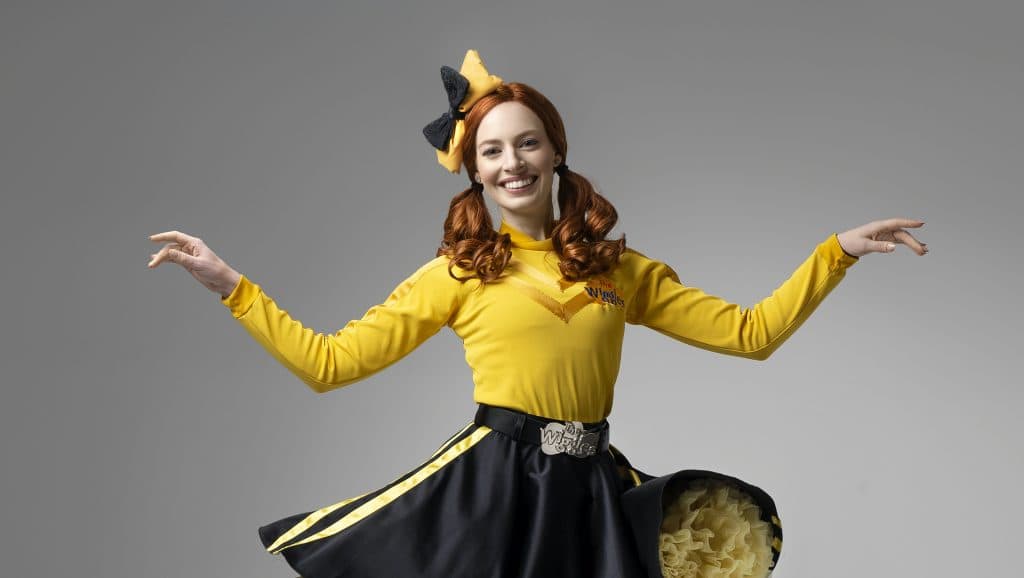
Emma Watkins formerly known as the Yellow Wiggle, is a proud ambassador of Endometriosis Australia. Take a look at Emma Watkins’ story “The Show Must Go On” where she shines a spotlight on Endometriosis.
Ten Endo Facts
- There is no cure for Endometriosis
- Teenagers are not too young to have Endometriosis
- Hysterectomy is not a cure for Endometriosis
- Endometriosis can not be prevented
- Endometriosis does not always cause infertility
- Period pain is not normal
- Getting pregnant will not cure Endometriosis
- Endometriosis can only be correctly diagnosed through surgical intervention
- Pain levels are not related to the extent of the disease
- Endometriosis is not an STI. You can not catch it.
Support Groups
Suffering with Endometriosis can feel isolating, please know that you are not alone. There are national online groups that you can contact for resources or support.
Australian Women with Endometriosis Support Group
Adenomyosis Australia – support group for partners of sufferers
Australian and New Zealand Endo Ladies
There is also a huge recognition of Endometriosis in WA and below is a link to the WA Facebook Support Group Endometriosis Western Australia
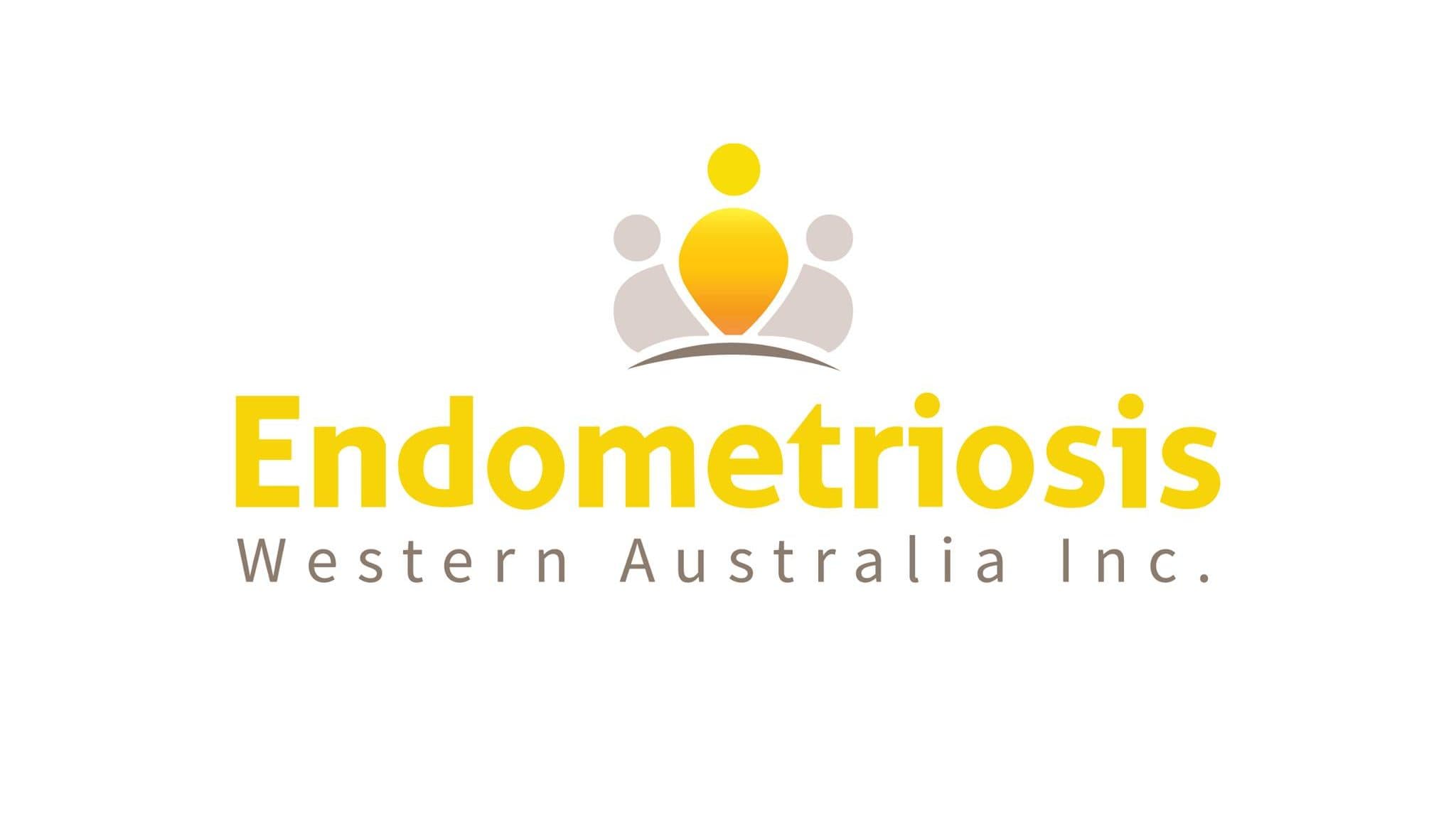
How you can help
There are many ways to be involved with Endometriosis Australia. From national events, on your own or in a group. Funds raised will go towards research, awareness and ultimately putting an end to Endo. You can help by fundraising, volunteering and donating. Have a look at the different ways you can help.
Melville mums share their stories
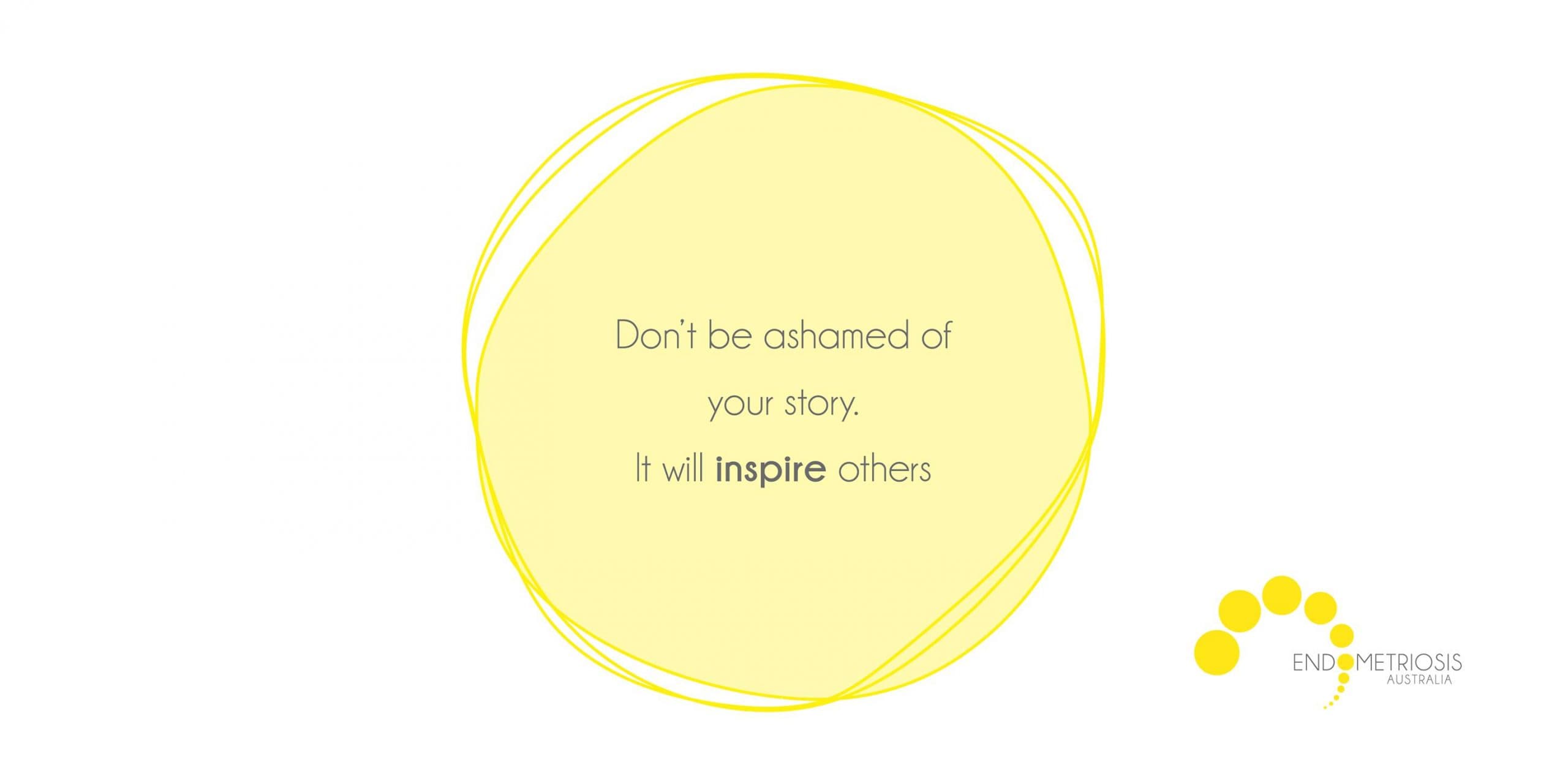
From the Melville Mums Facebook group, we have some amazing mums who have shared their experiences with Endometriosis in the hope that their stories let other women know they are not alone and to have the courage to seek help until you get an answer.
“I was diagnosed via laparoscopic surgery in December 2019. I have had painful periods as long as I can remember but it wasn’t until after the birth of my daughter that they became unbearable, to the point of vomiting in pain. Generally if opiate medication couldn’t relieve the pain it would result in a hospital trip. Whilst I was lucky in the sense that only minimal lesions were seen, endometriosis affects everybody differently. There could be someone with stage 4 endometriosis who experiences little to no pain, to people with minimal endometriosis suffering to an extreme level and vice versa.
Unfortunately I believe that my endometriosis has returned (and with it the extreme pain throughout the month, not just during my period, along with PCOS and adenomyosis). I am awaiting a new appointment with an excision specialist to discuss treatment and hopefully gain relief. I previously was treated via ablation, hence my wanting to see an excision specialist to try and prevent needing surgery, as I potentially will this time.
It is great that endometriosis is gaining exposure (especially during it’s awareness month), as there are so many misconceptions and false information that are spread. I really urge anyone who experiences painful periods to seek help and not just suffer thinking that it is normal.”
“Looking back I always had ‘problems’ with my period since I was young, however after having my first child at the age of 34, I noticed that post c-section my periods became unbearable and my iron levels were plummeting. I had bladder and bowel symptoms on-top of everything else and I was in pain for at least half of the month. GPs put it down to healing of c-section even 6 months post birth, suggesting using contraceptive pill to help, but I knew something was wrong.
I asked for a referral to my obgyn who suggested it was unlikely to be endo as I just gave birth. He agreed to a laparoscopy and found and ‘burnt’ the endo he could see and passed me onto a specialist. There was a few months wait and I felt significantly worse after the surgery. Thankfully the specialist was an ‘excision’ specialist and I had another surgery only 3 months after my laparoscopy and was diagnosed with stage 2-3 endometriosis including on the bladder (thankfully not bowel) which was excised (burning is not recommended, I since discovered).
I was also diagnosed with suspected adenomyosis. I fell pregnant again after a few months and had quite a lot of pain and cramping most likely from healing tissue etc but after birth I was fine, especially as breastfeeding for 6 months kept my period away.
Fast forward another year or so and I am in agony again unfortunately. Therefore, no…pregnancy didn’t ‘cure’ me at all, which is a common misconception. A recent scan has indicated my ovaries are stuck together (adhesions), an endometrioma discovered on ovary and my uterus is increasingly large and spongy. After review from another specialist, I have decided to have a hysterectomy. Unfortunately this will not cure my endometriosis, however it will cure me of the suspected adenomyosis and eliminate the heavy periods. My ovaries will be released and any endometriosis will be excised again.
Fingers crossed for improvement but it’s hard to know what will happen next as I will be keeping my ovaries. It’s terribly sad that such drastic measures need to be taken by women. Unfortunately for me I do not respond well to hormonal treatment (which I have tried many times over the years) and iron infusions twice a year is not my idea of fun!
I encourage women to not take no for an answer. To not feel like they are imagining, over reacting, being dramatic. It is NOT normal to be bed ridden with your period or ovulation. Advocate for yourself and if you don’t get answers from one doctor, see another until you find the right one.”
“I’d always suffered from heavy, painful periods. I just assumed that it was normal. It wasn’t until I was 38, I woke up one morning with the worst pain I could imagine. I eventually went into A&E but after a few hours, some morphine and being poked and prodded, I was sent on my way with a discharge note that stated I had “left-side pain” (this was in the UK…god bless the NHS!)
About a year later, after two ultrasounds and two more trips to A&E, I was eventually referred to a gynaecologist who reviewed the reports which had identified ovarian cysts. I had a further ultrasound with his team, and they found the cysts were irregular and had changed since the previous ultrasounds. He agreed to take me in for an investigatory laparoscopy.
I was in theatre for 6 hours. I had severe endometriosis, a 10cm and a 4cm ovarian cyst, and I bleed so badly I needed blood transfusion. I spent 2 days in HDU and a further week in hospital with an infection.
I underwent 2 further laparoscopies, one to “tidy up” the endometriosis and the second for a full hysterectomy. Luckily, I was able to go privately for the later, and my gynaecologist managed to save my womb (although he had to remove my fallopian tubes as they were too badly diseased) and confirmed my right ovary had escaped the worst of it, although my left was like a “raisin”.
I had convinced myself that I’d never have children but after the care I was (eventually) given, lots of heart ache and pain, (and not to mention a large amount of money!) just before my 45th birthday we were blessed with our amazing wee boy!
More needs to be done to educate people about endometriosis; what it is, how it can affect women and that there is help out there. I wasn’t fortunate enough to have a good relationship with my mum, so it wasn’t the sort of thing I could discuss with her. I had no idea what it was when I was diagnosed. I had no idea that it was the reason I couldn’t conceive naturally. But I am grateful for where I am now and the support I had along the way.”
If you have been diagnosed with Endometriosis, or are experiencing symptoms, there are lots of online and local resources you can access. You can find local Health and Medical Practitioners listed in our business directory. Or you may enjoy our interview with Claire Gasper, a local dietician who talks about wellness and nutrition. Just remember you are not alone.

